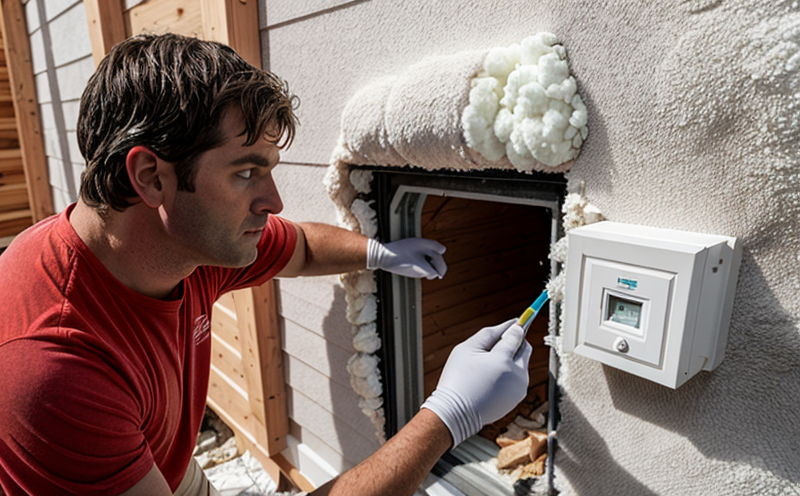EN 12664 Heat Transfer Measurement and Evaluation
The European Standard EN 12664 defines a method for measuring heat transfer through building components, including insulation materials. This standard is crucial in ensuring the thermal performance of buildings complies with energy efficiency regulations.
This test measures heat flow through building elements by subjecting them to controlled temperature and humidity conditions. The results help determine the thermal resistance (R-value) of the tested material or assembly. Understanding these parameters allows for accurate design, installation, and maintenance of insulation systems in buildings.
The process involves placing a specimen between two chambers with controlled temperatures and measuring heat flow through it using calibrated sensors. Acceptance criteria are based on specified tolerances to ensure accuracy and consistency across tests.
For instance, the standard specifies that specimens must be conditioned under specific humidity levels before testing begins. The apparatus used includes thermal bridges simulators and calorimeters designed to maintain precise temperature control within the chambers.
The results from this test are critical for several reasons. They inform decisions about energy-efficient designs, help in selecting appropriate materials, and provide data necessary for compliance with various international standards like ISO 10485 or ASHRAE 90.1.
Real-world applications of EN 12664 include verifying the performance of insulation layers in roofs, walls, floors, and doors to ensure they meet required thermal resistance values. This ensures that buildings perform optimally regarding energy consumption while maintaining occupant comfort.
A key aspect is understanding how different factors affect heat transfer rates. For example, variations in air tightness around windows or doors can significantly impact overall building performance. By using this test method, engineers and architects gain insights into these nuances, enabling them to optimize designs further.
Additionally, the data obtained through EN 12664 helps in assessing the long-term durability of insulation materials under varying environmental conditions. This knowledge is vital for predictive maintenance planning, ensuring that buildings remain energy-efficient over their lifetimes.
In summary, the application of EN 12664 extends beyond simple compliance; it offers valuable insights into material behavior and performance in real-world scenarios. Its role in promoting sustainable building practices cannot be overstated.
Eurolab Advantages
- Comprehensive expertise: Our team comprises seasoned professionals with years of experience in building materials testing.
- State-of-the-art facilities: Equipped with the latest equipment for accurate and reliable measurements.
- Dedicated to quality: We adhere strictly to international standards ensuring consistent results.
Why Choose This Test
- Ensures compliance with energy efficiency regulations.
- Provides critical data for optimizing building designs.
- Aids in selecting appropriate insulation materials and assemblies.
- Supports long-term durability assessments of insulation products.
- Promotes sustainable building practices by ensuring optimal performance.
Competitive Advantage and Market Impact
- Accurate and reliable data for informed decision-making.
- Early identification of potential issues in material selection or design.
- Potential cost savings through optimized insulation solutions.
- Enhanced reputation among clients due to proven expertise.





